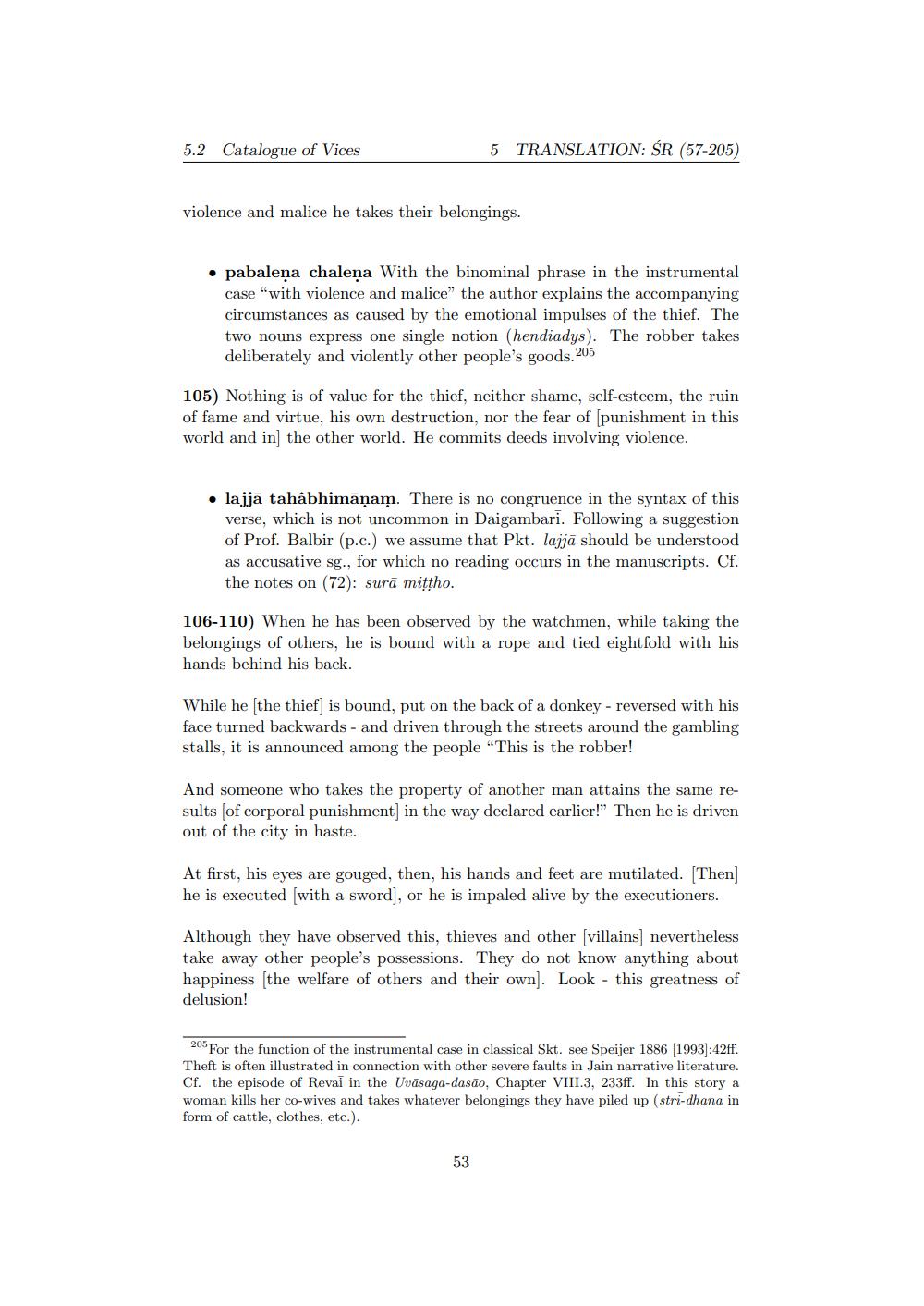________________
5.2 Catalogue of Vices
5 TRANSLATION: ŚR (57-205)
violence and malice he takes their belongings.
⚫ pabalena chalena With the binominal phrase in the instrumental case "with violence and malice" the author explains the accompanying circumstances as caused by the emotional impulses of the thief. The two nouns express one single notion (hendiadys). The robber takes deliberately and violently other people's goods.205
105) Nothing is of value for the thief, neither shame, self-esteem, the ruin of fame and virtue, his own destruction, nor the fear of [punishment in this world and in] the other world. He commits deeds involving violence.
• lajjā tahâbhimāņam. There is no congruence in the syntax of this verse, which is not uncommon in Daigambari. Following a suggestion of Prof. Balbir (p.c.) we assume that Pkt. lajja should be understood as accusative sg., for which no reading occurs in the manuscripts. Cf. the notes on (72): surā miṭṭho.
106-110) When he has been observed by the watchmen, while taking the belongings of others, he is bound with a rope and tied eightfold with his hands behind his back.
While he [the thief] is bound, put on the back of a donkey - reversed with his face turned backwards - and driven through the streets around the gambling stalls, it is announced among the people "This is the robber!
And someone who takes the property of another man attains the same results [of corporal punishment] in the way declared earlier!" Then he is driven out of the city in haste.
At first, his eyes are gouged, then, his hands and feet are mutilated. [Then] he is executed [with a sword], or he is impaled alive by the executioners.
Although they have observed this, thieves and other [villains] nevertheless take away other people's possessions. They do not know anything about happiness [the welfare of others and their own]. Look this greatness of delusion!
53
-
205 For the function of the instrumental case in classical Skt. see Speijer 1886 [1993]:42ff. Theft is often illustrated in connection with other severe faults in Jain narrative literature. Cf. the episode of Revai in the Uvasaga-dasão, Chapter VIII.3, 233ff. In this story a woman kills her co-wives and takes whatever belongings they have piled up (stri-dhana in form of cattle, clothes, etc.).




